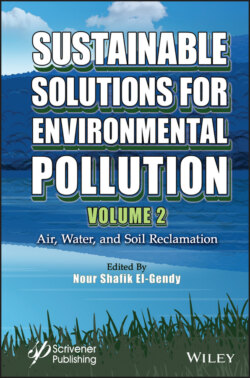Читать книгу Sustainable Solutions for Environmental Pollution, Volume 2 - Группа авторов - Страница 41
1.10.2 Floating Treatment Constructed Wetlands
ОглавлениеFT-CWs use natural water macrophytes on buoyant mats to increase the efficiency of FSF-CWs. The large root surfaces available for habitat for microbial growth and development lead to an efficient removal of pollutants from the water (Colares et al., 2020). Their main function is to remove nutrients (such as N and P) and OM from the water column and thus remedy the eutrophication of waterbodies. FT-CWs are built on the principle of removing unwanted nutrients but do so without the soil compound and roots are directly immersed in the water column (Pavlineri et al., 2017; Rehman et al., 2019).
For instance, yellow iris Iris pseudacorus was planted to remove N from the secondary effluent in three tanks, with or without the addition of an electron donor (acetate or thiosulfate), in order to study heterotrophic and autotrophic denitrification. Ntot removal rates were around 89.4% in autotrophic tank and 88.5% in heterotrophic tank, for a HRT of 1 day in summer. The autotrophic tank showed better nitrification and denitrification rates. The addition of electron donors effectively reduced N2O emissions, particularly in summer and autumn, and they distinctly induced microbial population shift. Dechloromonas, Thiobacillus, and Nitrospira became the predominant genera in heterotrophic, autotrophic and control tanks respectively (Gao et al., 2017). In a small-scale setup (600 inhabitants), a floating mat planted with Typha domingensis and applied to the raw sewage treatment for 12 months, removed in average 55% of COD, 56% of BOD5, and 78% of TSS. Reduction rates were 41% for Kjeldahl nitrogen (Nkj) and 37% for Ptot. Anaerobic condition measured in effluent could explain the low reduction rates (Benvenuti et al., 2018). Comparative pilot trials with pickerel rush Pontederia cordata and soft rush Juncus effusus showed a greater efficiency of P. cordata for Ntot and Ptot, with highest removal rates of Ntot (0.31mg/(L day) and Ptot (0.34mg/(L day) (Chanc et al., 2019). Afzal et al. (2019) used a full-scale (1,858 m2) FT-CW made of 120 coconut mats, on polyethylene rafts, planted with Brachiaria mutica, Canna indica, Leptochloa fusca, P. australis, Rosa indica, T. domingensis, and set up in stabilization ponds receiving 60% sewage and 40% industrial (textiles, food, and chemicals) wastewater. The maximum removal capacities of the system were 79% of COD, 88% of BOD, and 65% of TDS (Afzal et al., 2019).
Almost all the publications are dealing with bench or pilot scale trials, with very few working on a real scale. Therefore, one of the main challenges for FT-CWs is to move from pilot scale to a more realistic scale, in order to assess the behaviour of macrophytes and floating mats, in more “rugged” environments to study problems such as death of macrophytes, deformation and/or sinking of floating mats, and protection against plant predators (e.g., swans and ducks).
Characteristics that influence the effectiveness of FT-CWs are water depth, aquatic vegetation chosen, harvesting or maintenance of aquatic plants, presence of aeration in primary treatment, and seasonal fluctuations in temperature (Pavlineri et al., 2017; Prajapati et al., 2017; Shahid et al., 2018). Initially, natural FT-CWs were used to treat wastewater (Shahid et al., 2018). The application of FT-CWs has become more common in recent years, with the first applications in lakes and rivers in Germany and Japan (Shahid et al., 2018). Since then FT-CWs has become more broadly adopted, such as in the treatment of domestic and mine wastewater, agricultural and storm water runoff, eutrophic water bodies (Pavlineri et al., 2017; Shahid et al., 2018). Applications to improve water quality can be to introduce FT-CWs into various effluent treatment plants (domestic, agricultural, industrial, and mining) (Pavlineri et al., 2017; Prajapati et al., 2017).
